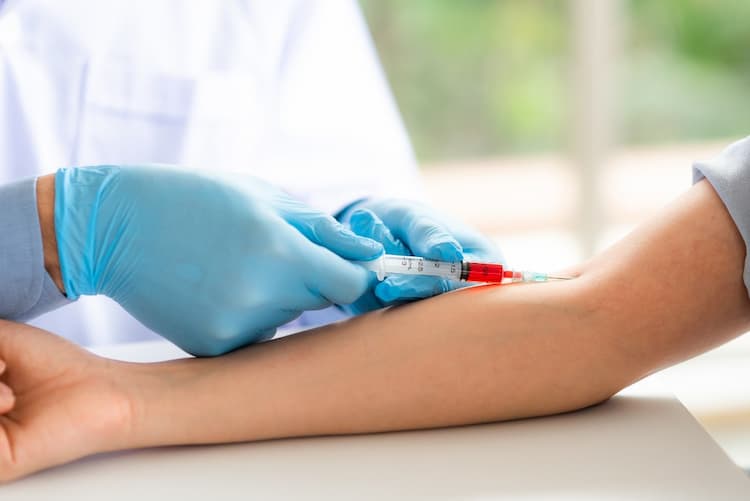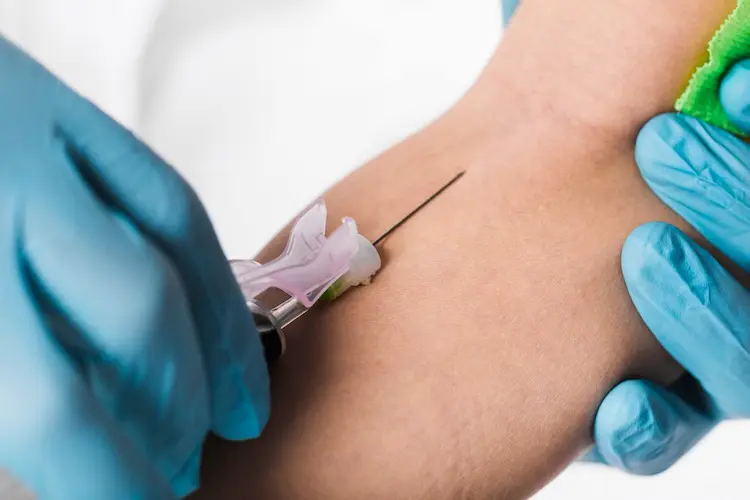What Are The 4 Types of Malaria?

Medically Reviewed By
Dr. Ragiinii Sharma
Written By Prekshi Garg
on Aug 11, 2022
Last Edit Made By Prekshi Garg
on Mar 18, 2024

According to the World Health Organization statistics, around 241 million cases of malaria were reported globally in 2022. The numbers are gradually rising, and so are the associated fatalities. The African region is the most prone to Malaria cases and deaths, but the remainder of the world isn’t immune.
To prevent malaria and the risks associated with it, it's necessary that one educates themselves about the vectors and what kind of consequences they bring with themselves. Currently, four types of malaria fever affect humans.
This article will explore more about these individual malaria types, the kind of symptoms they have, and the treatment options.
What is Malaria?
Before we divulge into the different types of malaria fever, knowing the basic concept of the disease is important.
According to WHO, “Malaria is a life-threatening disease caused by parasites transmitted to people through the bites of infected female Anopheles mosquitoes.”
It is a preventable disease, and with advancements in medicine, the disease is also curable. Typically, there are five different types of malaria vectors or parasitic species that cause this acute febrile illness.
Amidst them, P. falciparum and P. vivax impose the most damage and threat to humans. P.falciparum is the deadliest vector and is very prevalent in African countries.
Despite being a curable illness, proactive and immediate treatment is very important after a formal diagnosis. If left untreated, the condition can progress quickly and lead to potentially life-threatening situations.
What are the Types of Malaria?
As we just mentioned, there are five types of Plasmodium parasitic species that cause malaria. However, only four out of these five are considered viable in the present world.
All of these vectors are equally damaging, but P. falciparum and P. vivax impose the worst impacts on the body and can even lead to death if proper treatment isn’t administered on time.
Following are the four types of Malaria parasites worth knowing:
1. Plasmodium Vivax
P.vivax is one of the most common parasitic species that cause Malaria fever. It is very prevalent across African countries and even in India. Around one-third of Malaria cases reported in India are caused by the P.vivax parasite.
The reassuring factor about being infected by the Plasmodium Vivax parasite is that it's not life-threatening. However, it imposes severe symptoms that lead to weakness, compromised immune system, and a delayed recovery.
Symptoms include:
- Fatigue
- Diarrhea
- Bouts of fever
- Chills
- Flu-like symptoms
2. Plasmodium falciparum
While Plasmodium vivax is one of the most common types of Malaria fever vectors, P.falciparum is the most lethal of the lot. Being infected by this parasite can even lead to malaria-related death due to delayed treatment.
This particular parasitic species is the cause behind the most Malaria deaths in the world. The prevalence of this species is common in Africa, South America, and parts of Southeast Asia. Its prevalence is the highest in African countries at 70%. Around 25% of this parasite species is localized in Southeast Asian countries.
If you are at risk of being infected by this type of Plasmodium parasite, taking immediate precautions is very important. Start by consulting a doctor, getting tested, and starting the aligned treatment without any delay. Every day is important when you are infected with Plasmodium falciparum.
Lack of treatment or delayed treatment can even affect the brain and central nervous system, leading to cognitive impairment due to a condition called “cerebral malaria.”
Symptoms include:
- Fatigue
- Dizziness
- Abdominal pain
- Muscle ache
- Enlarged spleen
- Seizures
- Sore back
- Vomiting
- Joint pain
- Nausea
- Fever
- Headache
- Anemia
3. Plasmodium Ovale
After discussing the most lethal type of Malaria, let us focus on the rarest forms of Malaria. It is quite prevalent in Western African countries.
The worst part about getting infected with P.ovale is the recurrence of the malarial infection. After the initial manifestation of the symptoms and complete recovery, there are chances that the infection could recur later.
This happens since some of the parasites stay back in the liver and stay dormant there. When triggered in the future, it can lead to risks of a recurred malarial fever, sometimes with worse symptoms.
Generally, the risk of recurrence is between a few months to 4 years after the initial recovery from the fever. When they recur in the body, the parasites directly attack the red blood cells, causing lysis of the red blood cells, making the patient sick again.
Symptoms include:
- Fever
- Chills
- Fatigue
- Anemia
- Flu-like symptoms
- Nausea
- Disorientation
4. Plasmodium malariae
Last and another type of rare type of Malaria worth knowing about is Plasmodium malariae. It is prevalent across African, American, and South Asian countries.
In India, this particular parasite accounts for 1% of the reported malaria cases. It is not a lethal or fatal type of malaria and is generally curable with timely treatment. Even the symptoms are quite less and limiting with this type of malarial infection.
Symptoms include:
- High fever
- Chills
The last type of Plasmodium parasite that causes malaria fever is Plasmodium knowlesi. It is prevalent in Southeast Asian countries and is a fairly new type of malarial vector that’s worth knowing about.
How is Malaria Treated?
Irrespective of the type of vector, the treatment of malaria starts with the standard malaria test. It is a blood test that determines the type of parasite that caused the infection, so aligned treatment can be administered to the patient to help them recover from the infection.
Following a formal diagnosis, the treatment depends on:
- The vector that caused the infection (type of malaria parasite)
- The severity of the infection
- Age of the patient
- Medical history, including chronic illness, pregnancy, etc.
Once the above factors are determined, the common treatment starts with medications like:
- Chloroquine phosphate
- Artemisinin-based combination therapies (ACTs)
Your doctor will also monitor the symptoms and prescribe medications or treatment to manage the symptoms of fever, chills, flu-like symptoms, etc.
FAQs
-
What is one of the first signs of malaria?
The first signs of malaria include a high fever, muscle ache, fatigue, headache, malaise, etc. If you have been to areas with high malarial prevalence, consider getting tested immediately.
-
How long does malaria stay in your system?
The malaria treatment typically takes up to two weeks until complete recovery. However, there are instances of malaria relapses if some of the parasites are left behind in the liver.
-
What should we eat during malaria?
Eating a balanced and nutritious diet is crucial to recovering from the deadly impacts of malaria fever. Fruits, vegetables, healthy greens, etc., are considered ideal.
Conclusion
Malaria is still a prevalent parasitic infection that can worsen symptoms if left untreated. If you are experiencing any potential symptoms and suspect them to be malarial fever, take immediate steps to consult a doctor. Getting tested is very important to find which type of malarial parasite infected you.
Once that’s established, your doctor can start the allied treatment and help you manage the symptoms and work towards a complete recovery. A malaria test is crucial to the treatment. So, don’t delay testing if you suspect something is wrong.



